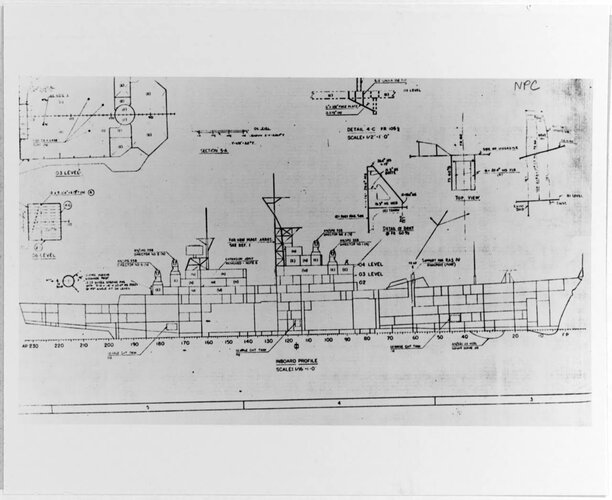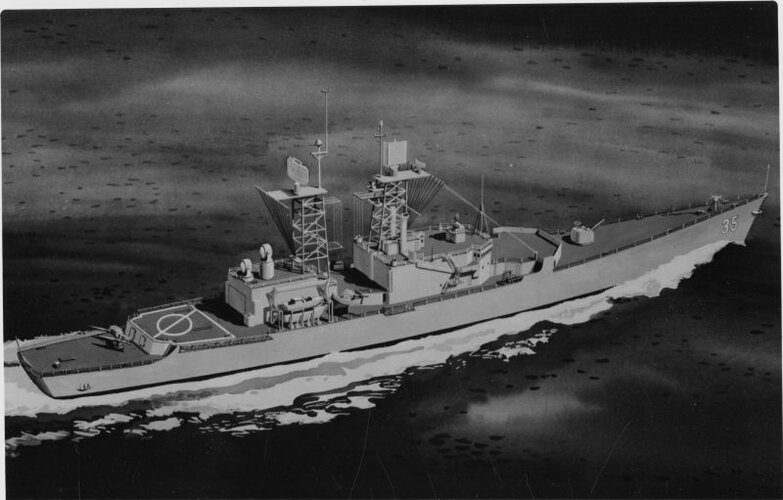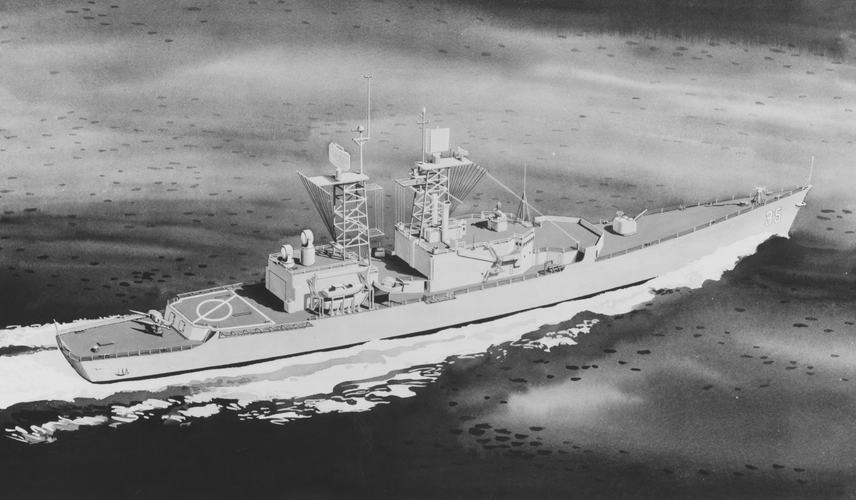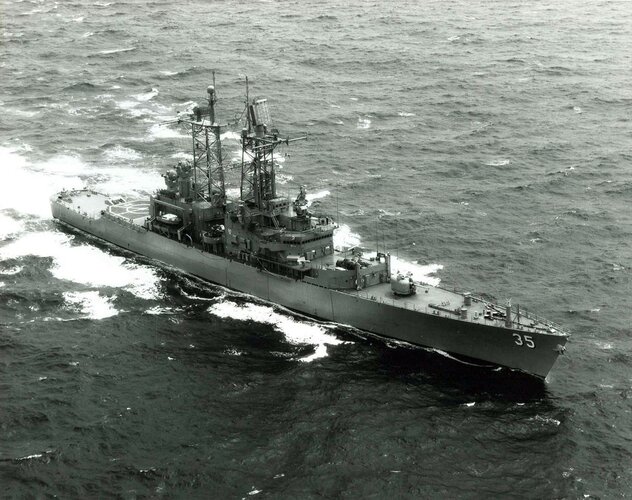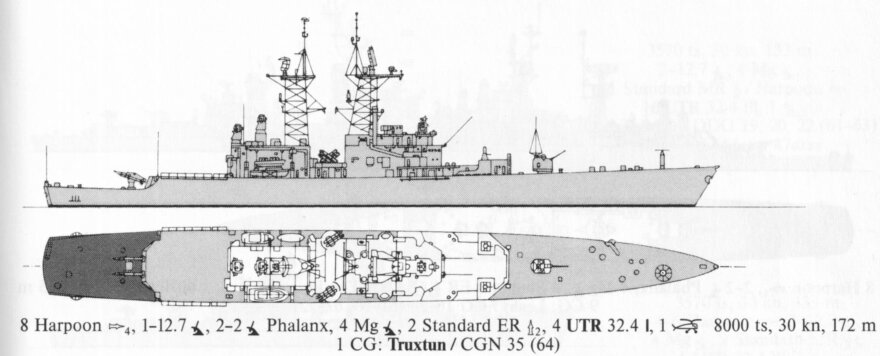Seeing the side elevation I thought at first it was like the housing for Ikara on RN frigates and stored the ASROC and Terrier rounds.
The bridge on the Truxtun and California is the standard one and not like the artists impression of the Typhon DLGN... But the space for weapons would seem to allow for two forward Typhon launchers.
SQS-26 and NTDS both took up a significant amount of volume, not to mention the three-ring Mk 10 GMLS, which further forward on the Truxtun compared to the after two-ring Mk 10 GMLS of Bainbridge due to the lack of volume aft. The SPG-59 required to make full use of the Typhon system required even more volume and weight, which is why the Typhon DLGN studies ended up displacing over 10,000 tons by the time the system was cancelled in December 1963.
The space forward of the bridge in Truxtun is taken up by the forward reactor (and it's likely that the NTDS computer room is in the deckhouse above and slightly forwards of the reactor refueling hatch). Weight distribution for Nuclear-Powered warships is awkward due to the lack of volume, and if the SQS-26, the 5"/54 (and potentially the NTDS room) was too heavy for there to be a second Mk 10 forwards, then it is likely that there are weight margins for two Mk 14s and the SPG-59 without affecting the ship's trim.
The very early 1958 BuShips steam-powered Typhon DDG study only has two Typhon MR/Mk 14 launchers total (essentially nuclear capable Mk 13s), and is close to the size of the Truxtun, with an overall length of 535ft compared to Truxtun's 564ft. The smallest of the 1961 Typhon DLGN studies, Scheme L, although it is a similar length to Truxtun (but slightly larger, I don't have an overall length, and Friedman's US Cruisers and US Destroyers give the same figure of 560ft for tow different types of length, LBP and LWL respectively) and like the earlier 1959 DDG, this is limited to two Mk 14s, with no Mk 10s.
Edit: I should add that I think Truxtun's forward deckhouse is for NTDS, primarily because the Leahys and Bainbridge required the addition of a similar sized deckhouse atop the aft superstructure (see the plans I posted of Bainbridge above, which were for her mid 1970s modernisation). Truxtun's aft superstructure may not have had the necessary volume, as the majority of it is taken up by the helicopter hangar, and the SPG-55s have one deck of deck-penetration below the antennas, not to mention Truxtun's lattice mainmast is immediately forwards of the SPG-55s, and the supports for that may take up too much space within the remaining superstructure.
I'm imagining something along the lines of taking the NTDS room as laid out on the Leahys and Bainbridge from atop aft superstructures, placing it just forwards of Truxtun's forward reactor refueling hatch, the NTDS deckhouse being rotated 90 degrees along it's base to take advantage of the increased width of Truxtun's forecastle as compared to the long and narrow aft superstructure of the Leahys and Bainbridge, which would also minimise the amount of length taken up, and then covering the reactor refueling space with a light deckhouse, to enable access between the NTDS and forward superstructure in NBC conditions.
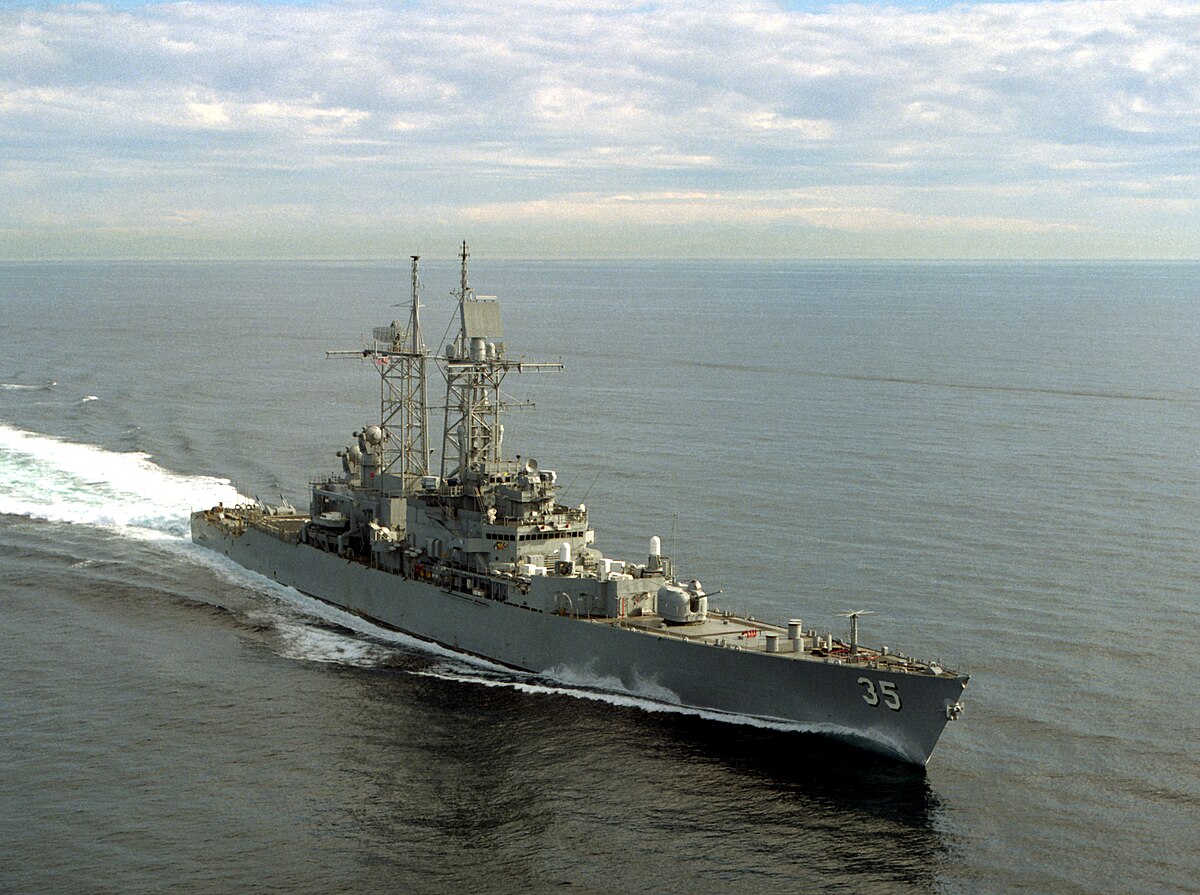
 en.m.wikipedia.org
en.m.wikipedia.org


